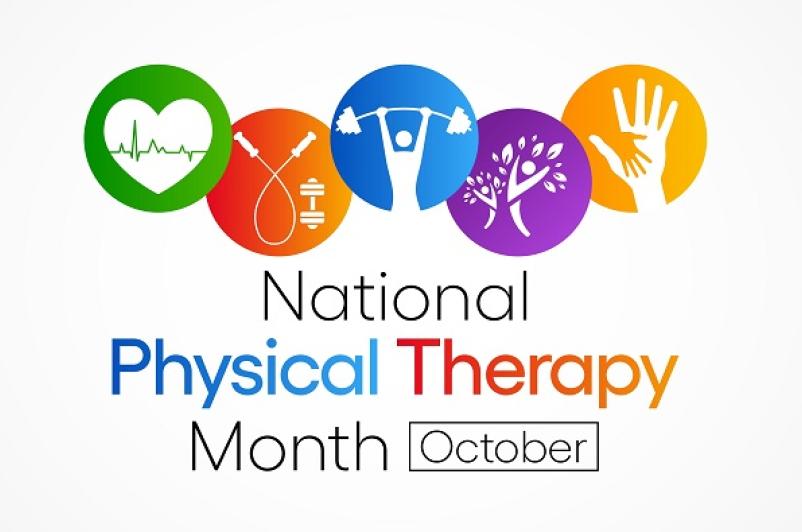
PressConnects October 10, 2022
The ability to fix a physical problem that interferes with activities of daily living is surely a superpower. National Physical Therapy Month in October is the time to recognize these unsung superheroes who help patients move more easily, feel better, and adapt to life after an accident, injury or other event.
According to the American Physical Therapy Association, the specialty’s national licensing body, physical therapists improve quality of life through hands-on care, patient education, and prescribed movement, offering the best first option for many symptoms and conditions. Using the expertise gained from formal training and experience in patient practice, physical therapists develop treatment plans specific to each patient’s body, lifestyle and goals.
UHS offers a wide range of physical therapy services. These patient stories offer a window into what physical therapy can do, and how it changes patients’ lives.
Pelvic Floor Therapy
It’s easy to picture and understand how physical therapy works after a knee replacement, surgery or injury. But what about therapy for muscles you can’t see?
Those invisible muscles are the main focus for UHS pelvic floor therapist Megan Gottlieb, PT, DPT, WCS, a doctor of physical therapy. She’s the only pelvic floor therapist in the UHS system, and has been offering her services to the region for more than a decade.
The pelvic floor helps with trunk stability; supports urinary, gastrointestinal and reproductive organs; and assists in bladder and bowel control and sexual activity. Like any other muscle group in the body, it can experience stress or injury. The difference? Unlike a strained knee or shoulder, the resulting difficulty probably isn’t something most people are willing to talk about.
Carolyn Schafenberg, 41, of Apalachin, would like to change that. “Pelvic floor therapy has been so helpful to me, and I’d like this to be a topic people are aware of and comfortable discussing,” she said. After three C-sections (her children are 11, seven and five), urge incontinence had become an ongoing issue. When Dr. Gottlieb presented on pelvic floor therapy for a moms’ group Schafenberg belongs to, the light bulb went on. “I realized I needed to prioritize myself and take advantage of this therapeutic option,” she said.
Schafenberg – in training to become a Pilates instructor – began weekly hour-long therapy sessions in April 2022, and currently goes every other week. Prior to starting therapy, she had been doing her best to manage symptoms with Kegel exercises and strengthening her core through Pilates. “I’m five years post-partum from my last baby. I wish I had started therapy sooner, and I wish every mom received a prescription for pelvic floor therapy after giving birth,” she said.
The ultimate goal of pelvic floor therapy is to resolve pelvic pain and improve patients’ quality of life. Schafenberg credits Dr. Gottlieb with teaching her exercises beyond Kegels. Said Schafenberg, “At my first appointment, we discussed my symptoms and goals. Megan started with basic exercises and gradually added in more challenging ones. She’s taught me about the structure of the pelvic floor so I can visualize what muscle groups I’m working. Sometimes I’m using therapeutic tools like a ball between my knees or a resistance band to isolate muscle groups,” she said.
For anyone who would benefit from pelvic floor therapy but has not pursued it due to embarrassment, Schafenberg offered this advice: “Just give it a try, even if you’ve been living with symptoms for a long time and are thinking it’s too late. Nothing is going to change unless you go do it.”
Shoulder Therapy
Lynn Vandamia, 58, of Owego, was thrown from a horse on July 4, 2021, resulting in a fracture of her collarbone both diagonally and in half, which required surgical placement of a large plate. What started as post-operative physical therapy to restore motion and strength turned into a whole new ballgame when she developed an allergy to the metal plate. The whole area became inflamed and froze her shoulder, and the associated pain meant a change in therapy plans.
Vandamia’s physical therapist, UHS’ Brian Tableman, MSPT, became her lifeline: “After just a week and a half I was in incredible pain, and Brian was the single thread that kept me hanging on. He did very minor, gentle exercises because there was obviously a complication. A metal allergy like this is rare, so he tried different things to keep me going and progressing and feeling hopeful.”
Vandamia had limited use of her arm and was in so much pain she was unable to do something as simple as open envelopes. “I have an Apple Watch, and I could see how little sleep I was getting during this time -- it was scary. I was struggling to function, and Brian knew that. He focused on what we were going to do versus how long it would take, explaining how the ligaments and muscles work together and how therapy would help reduce pain and restore strength and motion. He was my guiding light, gave me hope and never gave up,” she said.
Nine months after the plate was inserted, Vandamia had a second surgery to remove it, and her therapy work with Tableman began again. She had twice weekly sessions from September 2021 through June 2022, when she shifted to weekly. She expects to wrap up her therapy at the end of 2022: “I go every three or four weeks now -- it’s just helpful to know I’m not going backwards.” She is back to walking her two large dogs, which was impossible before therapy. She said, “No one has been as amazing as Brian -- he is the primary reason my arm is where it is. I’m such a firm believer in the value of physical therapy. Doctors can diagnose, but physical therapists understand how your body functions, works and adapts. They are worth their weight in gold.”
For more information about physical therapy at UHS, click here.


